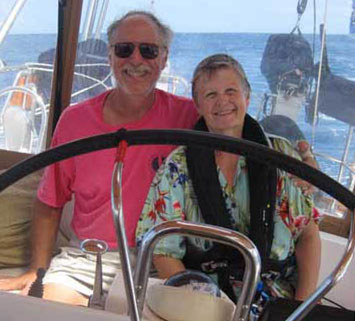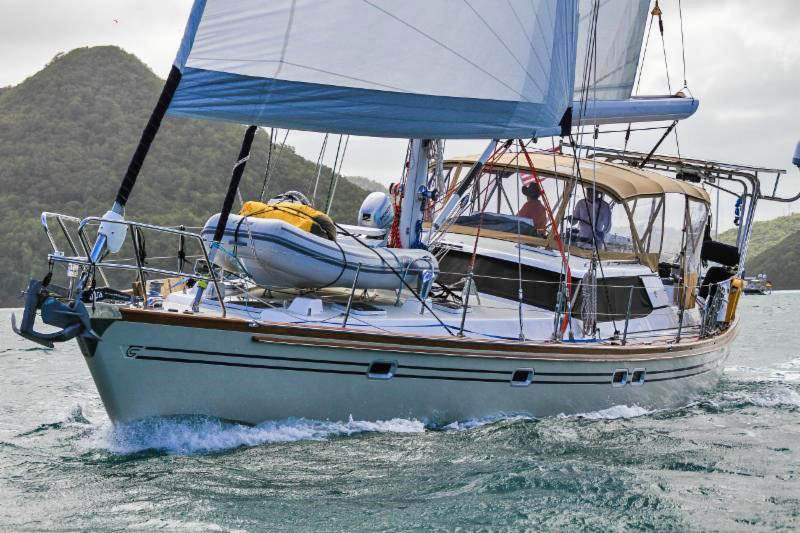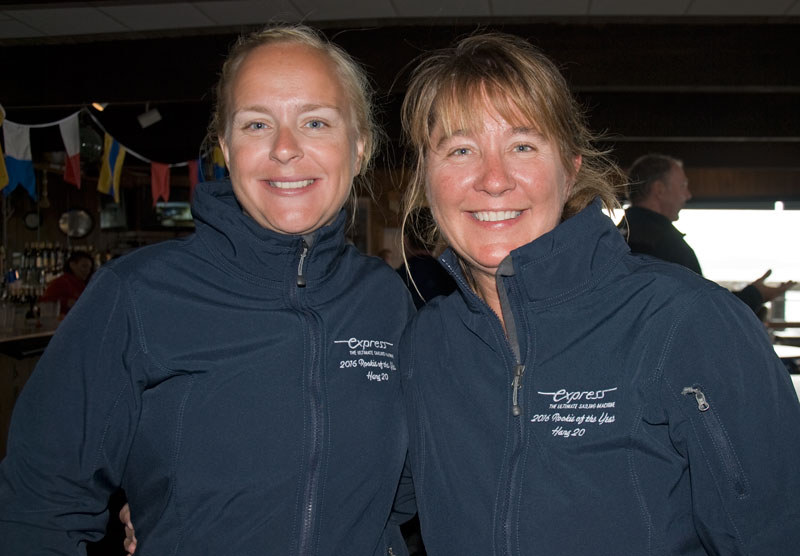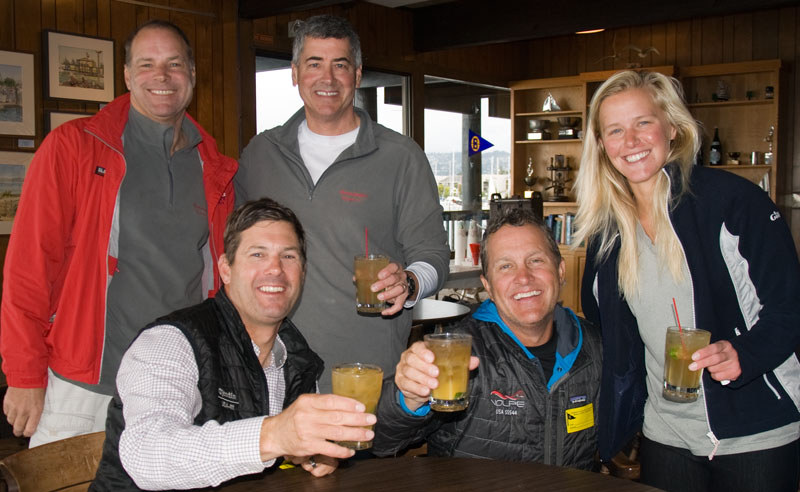
The Northwest Fountain of Youth

©Latitude 38 Media, LLC
Judging by the enthusiasm in their voices, you’d think Charlie and Cathy Simon are a couple of millennials about to take off on their first sailing adventure. In reality, Charlie is 62. “And I’m even older — a lot older,” laughs Cathy.
Furthermore, the owners of the Spokane- and Nuevo Vallarta-based Taswell 58 Celebration did an 11-month World ARC circumnavigation in 2014-2015, mostly doublehanded. Based on that, they have spoken at the Annapolis Boat Show for the last two years and authored the Quick Start Circumnavigation Guide.
“Our next adventure is the Northwest Passage,” the couple told Latitude 38 in excited tones during a recent telephone interview, “meaning the 2,500 miles from the Atlantic Ocean end of the Arctic Circle to the Pacific Ocean end of the Arctic Circle. It will be the highlight of our yearlong, 14,000-mile circumnavigation of North America.”
Only 250 boats in history have managed to complete the Northwest Passage, although, thanks to climate change, it’s currently a more viable voyage than it used to be. Sixteen boats did it last year.
“Why are we doing this? We want to see a different kind of environment, and different kinds of animal life, such as the polar bears,” says Cathy.
“In addition,” says Charlie, “we’d like to do our part to highlight climate change. To that end, we hope to be working with both NASA and NOAA, and stir the pot a bit.”
The couple will leave Annapolis in May, then depart Greenland in July for Resolute, the northernmost part of Canada and the eastern end of the Northwest Passage.
“Everybody who is going to do the Northwest Passage gathers at Resolute and waits for the water to clear of ice,” says Charlie. “Once it does, everybody scurries to get to Alaska on the other end of the Passage.”
“Contrary to common belief, the Northwest Passage is mostly a coastal rather than an ocean passage, and it’s not that remote or isolated. “There are six small communities along the route that actually have commercial air service,” says Charlie, “where it’s possible for us to have parts and other stuff flown in. We were far more isolated and remote when crossing the Pacific and the Atlantic.”
Yet another misconception is that the weather will be terrible on the Northwest Passage. “It’s far enough north where the weather usually isn’t too bad from July to September,” says Charlie. “It’s almost certain that we’ll encounter our worst weather farther south in the Gulf of Alaska after we’ve completed the Northwest Passage.” Having already sailed to Alaska twice, the Simons aren’t naive about the conditions.
“We’re actually not daredevil types,” says Cathy. “We like to be comfortable.” As was the case on their circumnavigation, Celebration’s entire cockpit can be enclosed. And to make the passage physically less strenuous, six young males have tentatively signed on to do the trip with the couple.

©2016Latitude 38 Media, LLC
Celebration returned from her circumnavigation in excellent shape. In order to prepare for the Northwest Passage, Charlie has installed a 150-gallon fuel bladder and a masthead camera, added a proper heater to augment the one in the reverse-cycle air-conditioning system, added a shortwave radio, and put on extra safety gear.
There is a Northwest Passage Facebook group that, thanks to his enthusiasm, Charlie has ‘inherited’. He’ll put out calls for other boats starting in January.
“One time during our circumnavigation, we went ashore to lunch at the same time a bunch of people did from a cruise ship,” remembers Cathy. “They had walkers or were hobbling along. Charlie and I noted how old they were — and then we realized we’re the same age as they are! Sailing is our Fountain of Youth. We’re doing it to keep young. And yeah, these sailing adventures have us feeling like kids again.”
The Straight Poop on Pumpouts
Writing about pumping out human waste from holding tanks is almost as uninspiring as actually performing that occasional chore. But it’s a very important topic.
First, let us remind you that you can be fined up to $2,000 for discharging untreated sewage into inshore waters or within three miles of the coast — this includes the entire San Francisco Bay and Delta. And here on the North Coast, the vast Gulf of the Farallones National Marine Sanctuary, the Monterey Bay NMS and the Cordell Bank NMS share the same — no-pumping-out — protections as inshore waters.

So what’s a boater to do? Luckily, the Bay Area is peppered with free or low-fee pumpout stations, mostly at marinas and launch ramps. That said, though, operating them is expensive and often troublesome for marina staff. We’re happy to report, however, that $12 million in grant money is now available for the construction, renovation, operation and maintenance of public boat pumpouts. This, according to a recent statement from BoatUS. These funds were generated from taxes and fees paid by boaters, and are made available through the US Fish & Wildlife Service’s Clean Vessel Act program.
"The deadline to apply for the 2017 grant cycle will soon draw to a close," says BoatUS. The organization urges would-be applicants to get the process started ASAP by contacting California’s grant coordinator.
PHOTO
Express 27s Take Berkeley by Storm

The 35th Express 27 National Championship was sailed on the Berkeley Circle during the first storms of the season on October 14-16. You might expect that with rain heavy at times and wind blustering into the 30s that the fleet might take it easy and not get in all seven races on their schedule, but these are no fair-weather sailors.

"This is the most boats we’ve had in 10 years," commented fleet captain Zach Anderson. Michele Logan, who sailed on the Tahoe-based Eagle, reflected that the racing was "really intriguing with 24 boats, really tactical."

©Latitude 38 Media, LLC
So many Express 27 sailors showed up that host Berkeley YC canceled their own Oktoberfest race and went all in to support the visitors. The club had just run the Express 37 Nationals the weekend before. Commodore Patrick Hind-Smith mused, "Two Nationals back to back — would we do that again? We’d have to talk about that."

©Latitude 38 Media, LLC
At the awards ceremony, Anderson, a partner in Motorcycle Irene, declared that, "We all owe Carl a big hug in the sky for designing such awesome boats." He was referring, of course, to the Express’s designer, the late Carl Schumacher. "We had just north of 30 knots and not a rig came down."
The level of excitement remained high through all seven races, as all the podium positions were still in contention going into to the final race on Sunday. Motorcycle Irene led by one point but found themselves on the wrong side of a wind shift, and Nick Gibbens successfully defended his title on Shenanigans.

©Latitude 38 Media, LLC
We’ll have more in Racing Sheet in the November issue of Latitude 38. In the meantime, see www.express27.org.
